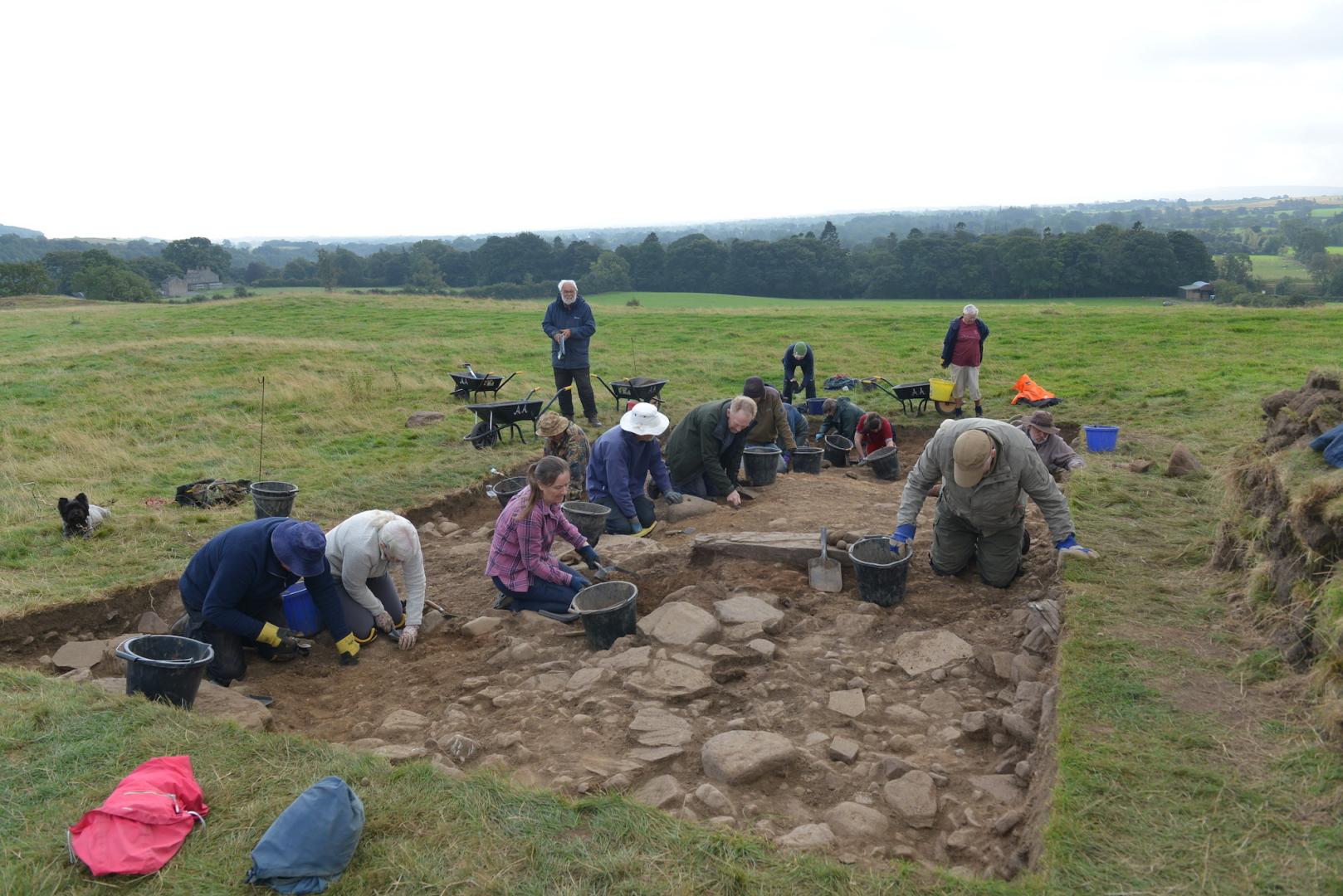LATEST finds during excavations at Gueswick Hill, near Cotherstone, suggest the area has been farmed consistently for about 3,000 years.
During their latest dig, volunteers from Altogether Archaeology uncovered a large curved structure which could date back to the Bronze Age, after previously discovering finds from the Iron Age, Romano-British and Medieval eras since investigations into the area began in 2019.
Among items uncovered from three trenches during the latest excavations have been charcoal, quern stones, flint, bits of shale jewellery and a spearhead.
The uncovering of a curved structure, which is potentially part of a much larger feature, was made purely by accident.
Dr Rob Young, who is a leading expert on flint tools and the professional archaeologist assigned to the dig, described the find as “mind blowing” .
He believes the arc that was found, with holes at regular intervals, is part of a much larger circular structure which has yet to be excavated.
He said: “Each one of those holes had a post in it. It was supports for a wall, I think.
“It was covered by a whole load of soil and cobbles.
“It was found accidentally, we didn’t know it was there. There was no inkling at all,” he added.
The cobbles were discovered during a previous dig and through carbon dating have been confirmed to be from the Romano-British period.
Dr Young said: “It was British but after the Romans came – it was a group of native, indigenous farmers who had contact with the Romans.”
Field lead on the excavation Dr Martin Green added: “I have no idea what the date is but it has got to be earlier than 200BC because the cobbles above it were carbon dated to 180BC, so middle Iron Age or back to Bronze Age.
“We found one or two flints so it could be Bronze Age or much older, which could be more like 1500BC.”
Samples from the post holes will be sent to Durham University for analysis.
Dr Green said organic material would be separated from the samples and put under microscope.
He added: “They tell us what the species of the trees are from the charcoal.
“You find out what they were growing from the grain seeds and you find out what weeds there were which often tells you if it was meadows or cornfields or whatever.”
Following this the charcoal would be carbon dated to determine its age.
Dr Young said a second site that is being excavated was also from the Romano-British period and included “a floor surface of some description” which could date to the Iron Age, but is more likely to be from the Romano-British period.
Several quern stones were found embedded in the surface, including a rare “craven” type.
Dr Green said: “They are usually found on the west side of the Yorkshire dales, and one or two in Anglesey – this is the first one to be found this far north. It has a collar around it – the idea is that as you use it, when it wears it will stay the same diameter.”
The third trench was in an area where what is thought to be a medieval windmill was discovered last year.
Dr Green said: “We opened it up and to be honest not found anything further. There is one big pad stone which the central post would have stood on and some groups of stones in a circle where the struts to support the central post would have been.
“We had about three days digging but the weather was awful so we had to give up.”
Results of the tests on the samples take about six months to be completed after which Altogether Archaeology will publish a report of the findings.






